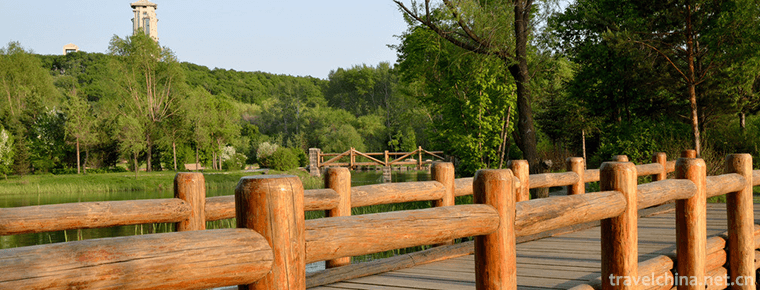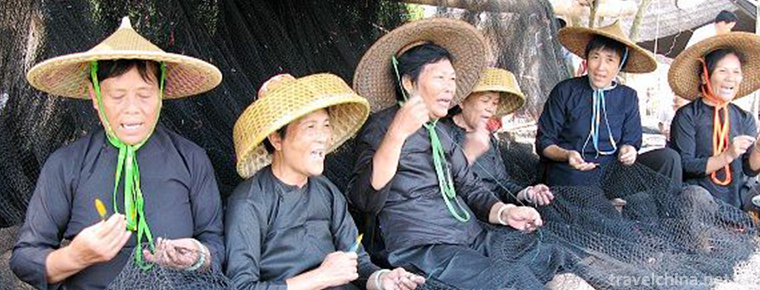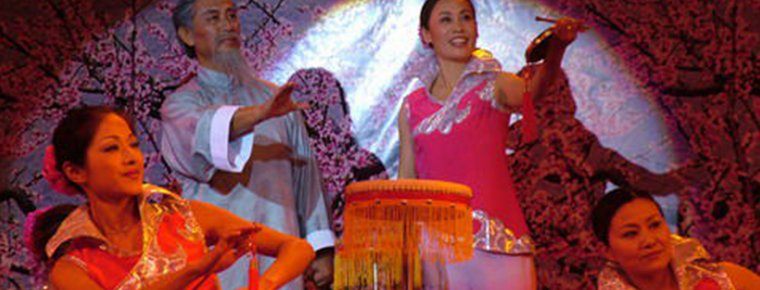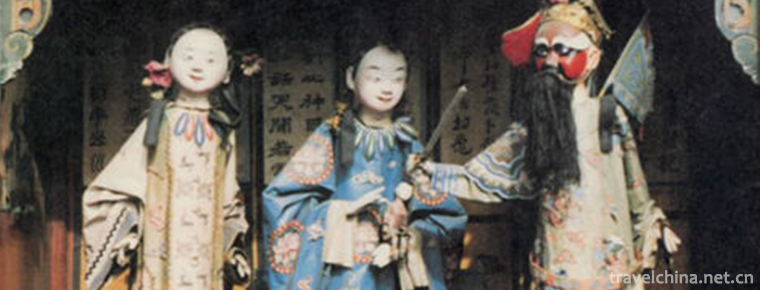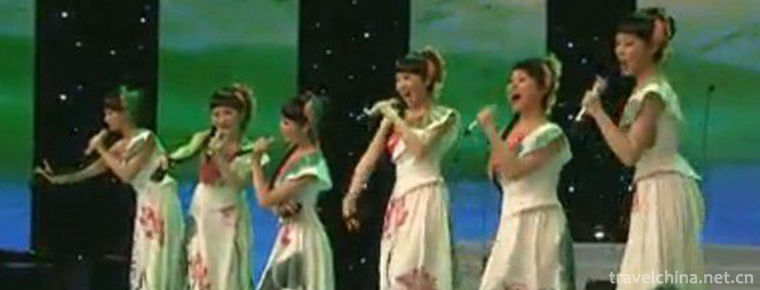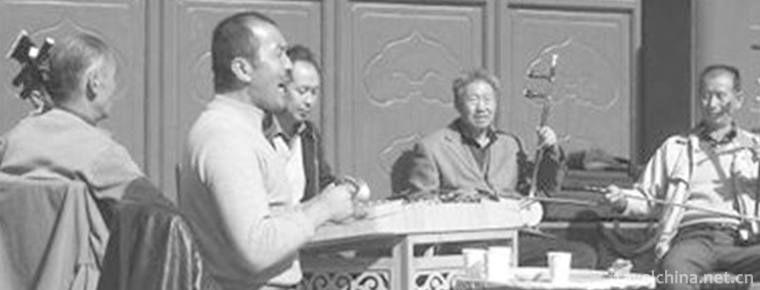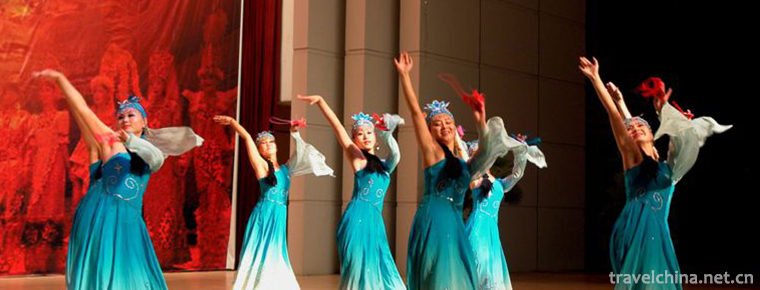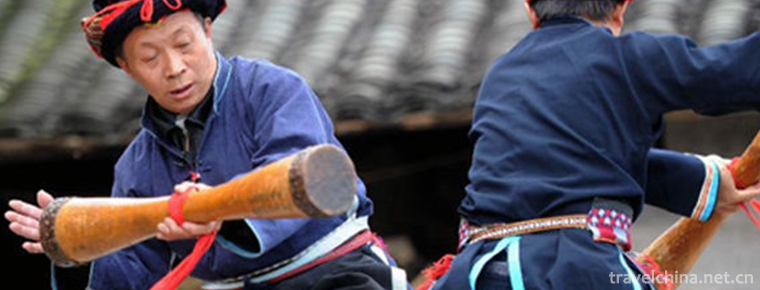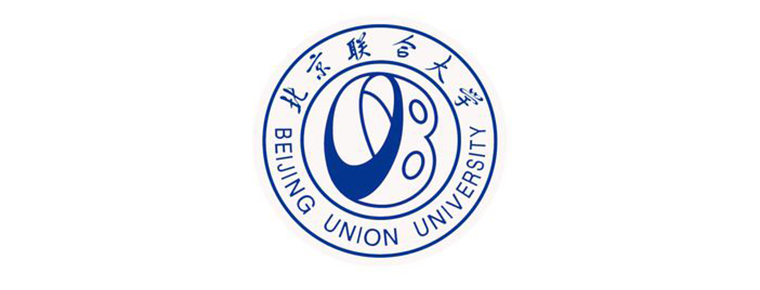Answer drum
Answer drum
Answer drums are popular in Quanzhou City, Fujian Province, other areas in southern Fujian Province and Taiwan Province, Hong Kong and Macao, as well as among overseas Chinese who speak southern Fujian dialect. Also known as Touchet Gu, Clap Gu or Answer Song, the Taiwanese people call Touchet Gu up to now. Touchet is the meaning of fighting, tongue warfare, and ancient is the meaning of telling ancient times and stories. In Southern Fujian dialect, "mouth drum" is also used to answer "cheek" and "mouth". The answer drum can also be interpreted as a mouth-only answer, winning by language wit. The content is not necessarily "ancient" (stories).
On May 20, 2006, the opera was approved by the State Council and listed in the first batch of national intangible cultural heritage list.
Historical origin
There is no written record of the origin and evolution of the reply drum, but in the ancient Liyuan opera, the string puppet show and Gaojia opera, the reply drum is used as a form of interruption. In the old days, monks and Taoists used this form to do things. It can be seen that it has been circulating among the people for a long time. In Southern Fujian, in soliciting business for folk entertainers and drug sellers in ancient times, beggars always pay attention to rhyme when they beg, improvising, just as smoothly. Even folk weddings and funerals often use a rhyme form of "chanting four sentences". For example, when the bride enters the bridal chamber, "chanting four sentences" is "stepping in with both feet and standing on both sides of the chair". The bride is an angel and her son-in-law is the best talent.
At the end of Ming Dynasty, Zheng Chenggong, a national hero, led a large army to Taiwan. Most of the soldiers were from southern Fujian, and "Nian Siju" was also introduced to Taiwan. It was called "Siju Lianzai" locally. Later, it gradually developed into "Ancient Touching Mouth", which was the same form as "Answer Drum" in southern Fujian.
As the four sentences are widely circulated among the people, they are gradually used to make jokes and disputes in people's daily conversation. It requires both sides to be sensitive and fluent. If one side can't continue, it will cause a lot of laughter. This form gradually developed into a reply drum .
Artistic characteristics
Answer drum is the form of two people's counterpart argument, similar to the northern counterpart cross talk, but not the same. Its dialogues are strictly rhymed rhymes with strong language rhythm, and are good at using rich, colorful, lively, humorous and witty Southern Fujian dialect words and slang, using the complex and rhythmic and musical rhyme structure of Southern Fujian dialect to organize rhymes, paying attention to plot display and characterization, paying attention to the use of the art of "bagger" and "Weideng jokes" (bursting jokes). Means to achieve comic artistic effect. Others are like the northern Shulaibao, but they don't need to strike a melody instrument. However, when monks and Taoists used such instruments as flat drums, cymbals, Pinxiao, Nanbu, and big trumpet to play between paragraphs, and used flat drums as conductors, so Anzuo Gu also wrote reply drums. Occasionally one person will answer the drum and imitate the conversation between two people. The artistic feature of the reply drum is to use rhyme dialogue as the form, and to make up a joke with lively and colorful Minnan dialect to express a certain theme. Generally speaking, the audience is attracted only by the wit, humor and skillful use of rhymes.
Representative repertoire
Traditional programs such as "Black Cat and Black Dog", "Opium Song" and "The Fighting of the Blind and Dumb" were recorded before the Anti-Japanese War. In the 1950s, a number of excellent works appeared, such as "Turtle Chasing Aircraft", "What's Smiling", "Captain Female". After the 1970s, the cross talk art used language to form a "burden" and produced some novel and mature works such as "Heart Refining", "Qingxinchun", "Mid-Autumn Festival Moon Festival", "Tangshan Crossing Taiwan".
Taiwan's modern work "Husband and wife curse each other" is also influential.
Inheritance value
Because the two sides of the Taiwan Strait share the same origin, language and customs, the art of answering drums is also popular among the Taiwanese people. In June 1991, Yilan, Taiwan, held the First Taiwanese Answer Drum Competition, which promoted the improvement of the artistic level of Taiwanese Answer Drum. Lin Pengxiang, an artist of the Southern Fujian reply drum, disseminated the program to all quarters through various media, which also aroused strong repercussions overseas, and became a valuable material for overseas experts and scholars to study the folk customs and vocabulary of Fujian and Taiwan.
However, with the continuous progress of modernization, fewer and fewer people, especially young people and outsiders, can fully listen to Minnan dialect. The activity space of answering drums is becoming narrower and narrower, and the age of creative performers and audiences is generally aging. With the death of Lin Pengxiang and other older generations of artists, the artistic inheritance of the reply drum appears to be green and yellow. This form of opera is facing a serious crisis of the loss of generations, which urgently needs to be rescued and protected.
Local language
Minnan dialect originated in southern Fujian and has been represented by Xiamen dialect, which is widely used in southern Fujian. In addition, Singapore, Malaysia, the Philippines, Indonesia, Thailand, Hong Kong and the overseas Chinese and ethnic Chinese of southern Fujian who live in various parts of the world also speak Minnan dialect. Although there are some differences in Minnan dialect, they can basically talk to each other without hindrance. Xiamen dialect differs greatly from Mandarin (Mandarin), the common language of the Han nationality, and cannot communicate with each other. The differences between Xiamen dialect and Putonghua are mainly manifested in phonetics, vocabulary and grammar. Mandarin
There are only four tones, that is, Yinping, Yang Ping, Shang Sheng and Qusheng. There are seven tones in Xiamen dialect: Yinping (Tiangong), Yang Ping (Chinese), Shang Sheng (good wine), Yin Go (world), Yang Go (Zhaoli), Yin Go (800) Yang Go (Yaoshi). The phenomenon of continuous tone sandhi in Xiamen dialect is more complicated than that in Putonghua. Many phenomena of Xiamen dialect phonetics reflect some characteristics of ancient and medieval Chinese phonetics, which is quite prominent in Chinese dialects. In terms of vocabulary, Xiamen dialect has quite a large number of unique words in its own dialect, which is rare or even absent in Putonghua or other dialects.
Season order
Xiamen, like other parts of the country, attaches great importance to folk traditional festivals.
Spring Festival. The first day of the first lunar month is the most important traditional festival of the year. Every family pastes Spring Festival couplets before the festival. On New Year's Eve, the family cooker (hot pot) eats New Year's meal. Some people stay up all night, called "Waiting for the Year". Older generations distribute red envelopes to minor children, called "New Year's Money". In the early morning of the first day of junior high school, firecrackers were set on fire. People change into new clothes and pay New Year's greetings to their relatives and families according to their generations. When they meet friends on their way, they congratulate each other on their new joys. When guests come home, they should treat them with sweet tea, candy and preserves. If they have children, they will give them gifts of oranges and melons and fruits. On the third day of the first lunar month, it is regarded as a sad day for a new funeral home. Generally, people do not go out to celebrate the New Year.
Yuan Xiao Festival. On the fifteenth day of the first lunar month, Xiamen is also called "Shangyuan Festival" or "Lantern Festival". On that night, parents often take their children to the streets with lights. In recent years, it has become a common practice to hold "Ludao Lantern Festival" in Zhongshan Park.
Tomb Sweeping Day. People should sweep tombs and sacrifice their ancestors according to customs. Tomb sweeping used to be a sacrificial paper, but now it is gradually replaced by a wreath or bouquet. On the 10th day around the Qingming Festival, cemeteries and ashes chambers were opened for public memorials.
The Dragon Boat Festival. On the fifth day of May in the lunar calendar, Xiamen is commonly known as the Five-Day Festival. In the past, it was rare to insert Aipu in front of the house, sprinkle realgar wine in the house and wear sachets for children to exorcise evil spirits. But people are also accustomed to turning over their clothes, doing a lot of cleaning on this day, and retaining the custom of eating zongzi and dragon boat racing. Jimei Dragon Boat is the place where dragon boat competitions have been organized over the years, and it will be very lively at that time.
Mid-Autumn Festival. August 15th of the lunar calendar is the day when people gather together or miss their distant relatives and friends. In the Mid-Autumn Festival, Xiamen people not only enjoy the moon and eat the Mid-Autumn moon cakes, but also have a kind of folk activities of "playing cake beating first prize" handed down from Zheng Chenggong's expulsion of Hawaii and recovery of Taiwan, which is very characteristic and full of fun. The Mid-Autumn Festival cake boxes are 63 cakes of different sizes. They are divided into 6 kinds, representing the top candidates in the ancient imperial examinations, listing eyes, exploring flowers, scholars, candidates and outstanding talents (commonly known as the top candidates, couplets, three red, four in, two in and one in the activities of "Beating the top candidates". Each person takes turns to throw six dices into the bowl, according to the number of points put into the bowl of dice collar pie, in order to finally win the "first prize" for luck. For more than 300 years, this fun-filled activity has been spreading among the people in Xiamen.
Double Ninth Festival. The ninth day of September in the lunar calendar is the "Double Ninth Festival". Folk people like mountain climbing and outing.
Winter solstice festival. Every family worships their ancestors and eats dumplings.
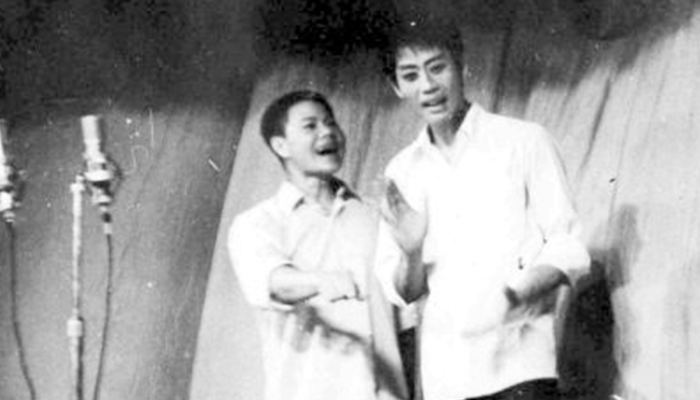
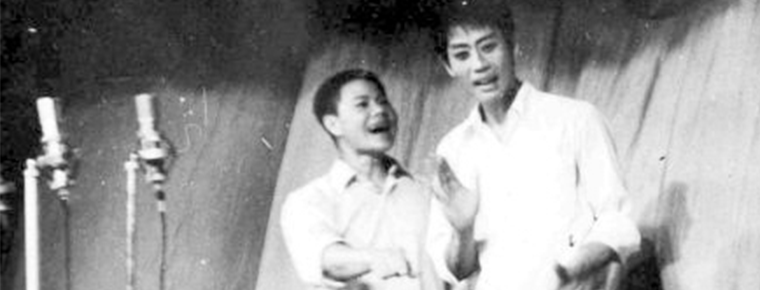
Answer drum
-
Mountain Lushan
Mount Lu, also known as Kuang Shan and Kuang Lu, is located in Mount Lu City, Jiujiang, Jiangxi province. It is located between the east longitude 115 degrees 52 '- 116 degrees 8'
Views: 223 Time 2018-10-30 -
Jingyuetan National Scenic Area
Jingyuetan, National AAAAA Class Tourist Scenic Spot, National Scenic Spot, National Forest Park, National Civilized Scenic Spot Demonstration Site, National Water Conservancy Scenic Spot
Views: 246 Time 2018-12-05 -
Lingao Fishing Song
Lingao Fishing Song is a kind of Han folk song which is popular among fishermen in Lingao County, Hainan Province. Because of its use of the lining "Li Li Mei" and related legends, it is als
Views: 290 Time 2019-05-13 -
Gongs and drums
The Gong and drum books used to be called "Taibaoshu", "Taibao" is derived from the activities of "Taibu" in the countryside of Shanghai suburbs and counties, which seeks
Views: 138 Time 2019-05-15 -
Pingyao Shage Player
Pingyao Shage Opera, commonly known as Shage Renren, also referred to as Shage, is one of the traditional handicraft techniques in Pingyao, Shanxi Province. Because it was usually placed in the cabine
Views: 245 Time 2019-06-09 -
Qianjiang Folk Songs
Qianjiang folk song is a traditional folk song in Hubei Province. Popular in Qianjiang City, folk songs created by local working people in their work, life and customs. Its rich content,
Views: 305 Time 2019-06-10 -
Qinghai Pingxian
Qinghai Pingxian, also known as Xining Fu Zi, is one of the new local folk songs in Qinghai Province. It is popular in Xining, Huangzhong, Datong and Mutual Aid Agricultural Areas. Qupai is known
Views: 223 Time 2019-06-10 -
Xibo Westward Movement Festival
The Xibo people's westward migration Festival is called "418 Festival" because it is on April 18 of the lunar calendar. Because of the intention to miss relatives, also known as the Day of R
Views: 226 Time 2019-07-01 -
Long Drum Dance of Yao Nationality
Chinese Yao folk dance. Popular in Guangdong, Guangxi, Hunan and other provinces where Yao people live together, most of them perform on traditional Yao festivals, harvest celebrations, relocation or
Views: 260 Time 2019-07-11 -
Beijing Union University
Beijing Union University was founded in 1985 by the Ministry of education. It is a comprehensive university in Beijing. Its predecessor was the 36 University branches in Beijing in 1978. After more th
Views: 186 Time 2019-09-06 -
Beijing Normal University
Beijing Normal University is a key university directly under the Ministry of education. It is a famous university characterized by teacher education, educational science and liberal arts basic subject
Views: 192 Time 2019-09-06 -
Plant resources in Guangan
The forest vegetation in Guang'an City belongs to the vegetation area of evergreen broad-leaved forest and coniferous broad-leaved mixed forest in the middle subtropics. Gymnosperms include Pinaceae, Cupressaceae, Ginkgo biloba and Metasequ
Views: 311 Time 2020-12-19

